What's the difference between different microphone designs and how do they work?
If you've heard the terms dynamic, condenser, and ribbon mic before and wondered what they actually mean, we're here to help
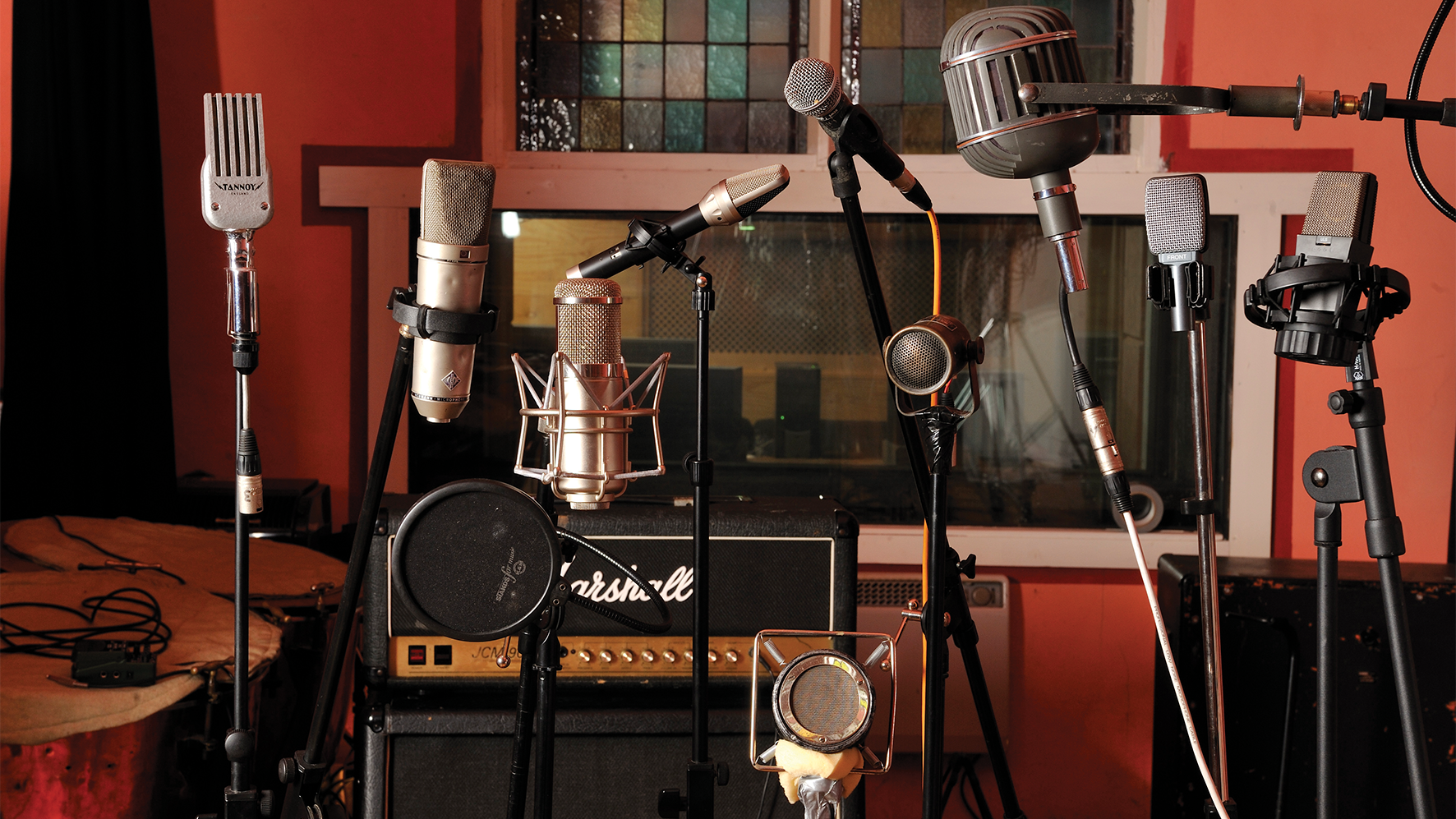
All microphones work in a similar way. They have a diaphragm (or a ribbon) that moves in response to changes in air pressure due to sound waves impinging on the diaphragm – similarly to how the diaphragm or ‘eardrum’ in the human ear responds to sound.
The movement of this diaphragm, or ribbon, then produces a changing voltage, with a positive value (or amplitude) when the diaphragm moves one way and a negative value (or amplitude) when the diaphragm moves the opposite way. There are three main types of microphone to choose from – dynamic, ribbon, and condenser.
Dynamic mics
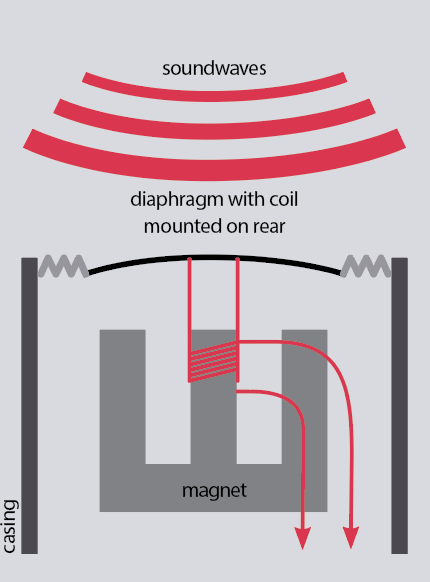
With a so-called ‘dynamic’ microphone (the word ‘dynamic’ means changing or moving), a small coil of wire, positioned within the magnetic field of a permanent magnet, is attached to the diaphragm. When a sound wave enters the microphone, the diaphragm vibrates back and forth in an analogous way to the movements of the sound wave.
When a wire moves in a magnetic field, a current is induced in it. So, the pressure of the sound wave vibrates the diaphragm, which in turn moves the coil in the magnetic field, inducing the electrical signal in the wire, which is then passed to the microphone cable (sometimes through a step-up transformer to increase the voltage).
The mass of the diaphragm and coil arrangement means that the moving coil mic suffers from inertia issues. That is, the arrangement is resistant to changes in its state of motion, meaning that it doesn’t fully accurately represent the sound pressure, particularly at high frequencies where the diaphragm and coil arrangement must change speed and direction more frequently.
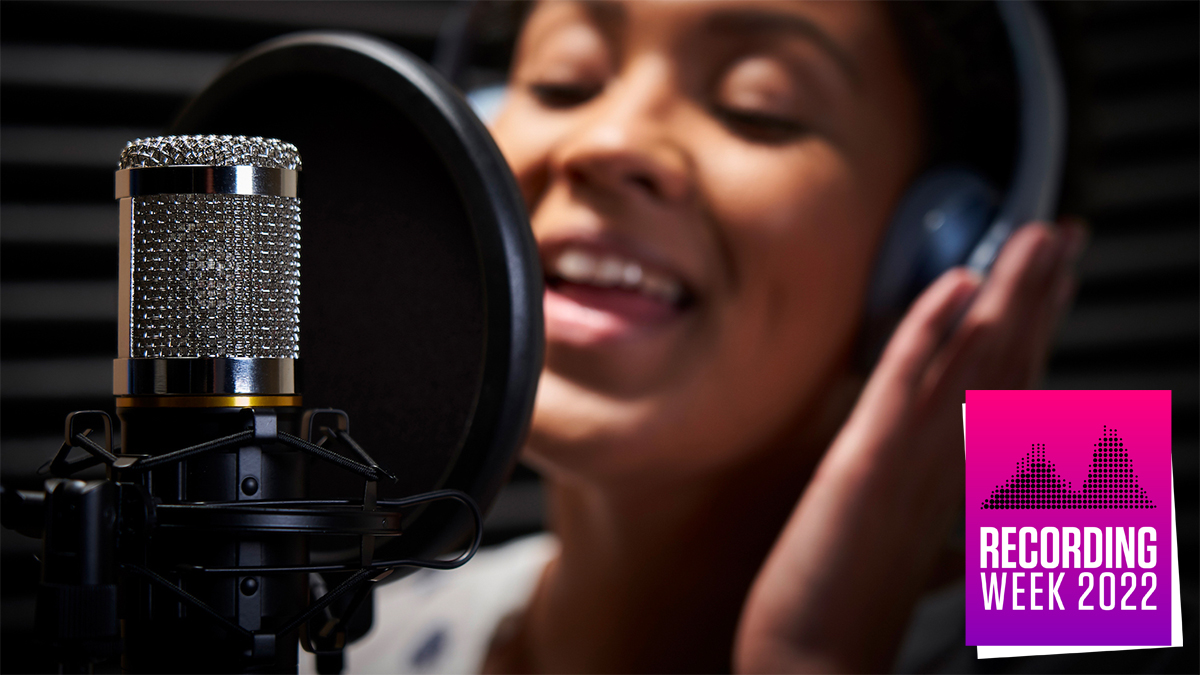
As something of a side note, you may notice that the construction of a moving coil mic is very similar to that of a loudspeaker driver, which consists of a loosely suspended cone attached to a moving voice coil in close proximity to a fixed magnet. The speaker driver works in the opposite way to the microphone – the flow of a signal through the coil induces a magnetic field which drives the coil away from the magnet, moving the speaker cone. This is the reason that a speaker driver may be wired up to an input and used as a rudimentary mic.
Ribbon mics
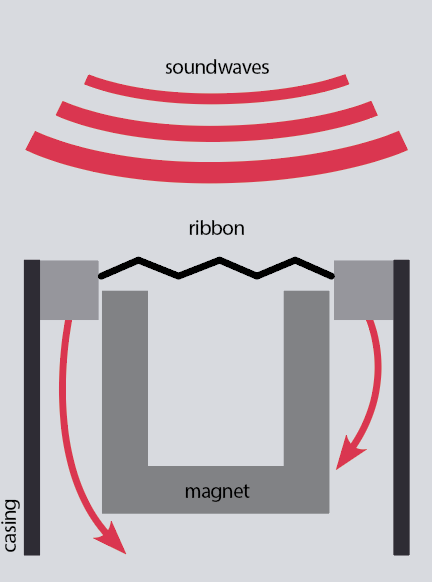
Ribbon mics are another form of dynamic mic, although usually billed as a distinct design by manufacturers due to their high-end desirability.
Want all the hottest music and gear news, reviews, deals, features and more, direct to your inbox? Sign up here.
In the case of a ribbon microphone, the ribbon is made of metal and is suspended in a magnetic field, so when it vibrates, varying electrical signals are produced. The output voltage of the ribbon is low, so most ribbon mics also contain a step-up transformer to boost the voltage to an optimal level. The lighter arrangement of the moving parts helps to overcome some of the inertia problems of the moving coil mic, meaning that ribbon mics are generally more accurate at higher frequencies than moving coil.
Ribbon mics tend to be more delicate than moving coil mics, so are better suited to studio work than live performance.
Condenser mics

Condenser mics do not operate using the same basic magnetic principles as dynamic mics, instead being based around a smaller, capacitor-based element.
In a condenser microphone, the diaphragm acts as one plate of a capacitor, and the vibrations produce changes in the distance between the plates. These changes are translated into varying electrical signals by one of two methods – DC‑biasing or RF biasing.
Because the front plate of a condenser mic is significantly smaller than the diaphragm and coil/ribbon setup of a dynamic mic, it is lighter and therefore its speed and direction of movement changes more rapidly, allowing it to create a more accurate representation of the sound pressure.
As such, condenser mics usually have a more accurate frequency response curve than dynamic mics. Electret mics are a form of condenser mic where the capacitor dielectric is permanently charged without the need for phantom power. The electret itself is a small capacitor which functions in a broadly similar way to a traditional condenser mic.
Pickup (polar) patterns
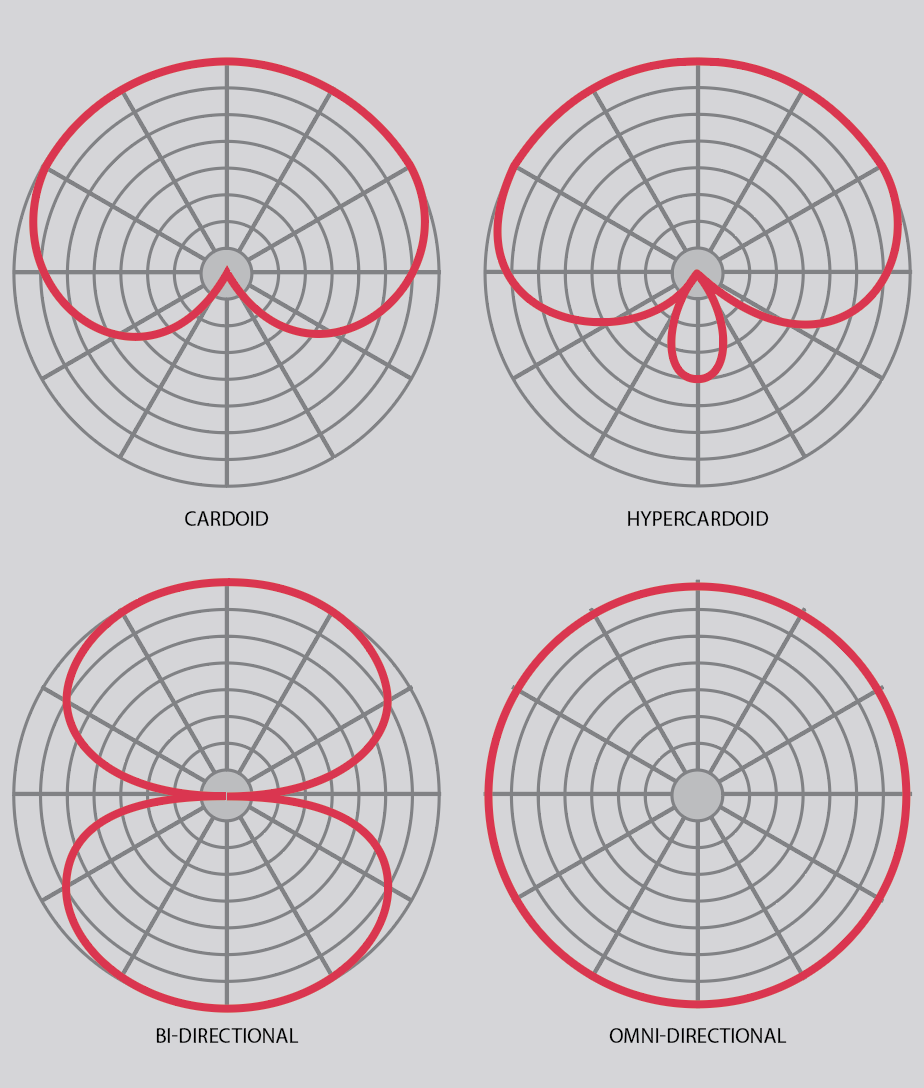
Another typical microphone specification is the pickup pattern, more usually called a polar pattern. This is a circular graph showing how the microphone picks up sound coming from the different directions in a circle around the microphone.
An omni-directional microphone, as its name suggests, picks up sound equally from all directions. This is particularly useful when you want to capture the ambience of the space around the microphone.
A cardioid microphone, again as its name suggests (cardioid means heart-shaped), picks up sounds in a heart-shaped pattern, mainly from the front, while rejecting sounds coming from the sides and the rear. The advantage here is that this microphone mostly just captures sound from the sound source that it is pointing at.

Best microphones for recording 2023: top studio mics for instruments, vocals and more
A hyper-cardioid is similar but with a narrower area of sensitivity at the front and a small area of sensitivity at the rear. A variation on this is the hypercardioid, which has an even narrower pickup area at the front and even less pickup from the rear. These pickup patterns can help isolate the instruments that they are intended to pick up more effectively, and also help to minimise feedback in live situations.
The other main type of pickup pattern is the figure-of-eight or bi-directional pattern, in which sound is picked up equally from the front and the rear, while sound from the sides is strongly rejected. Microphones with this type of pickup pattern can be used to record two nearby sound sources, either side of the microphone, while rejecting sounds coming from the other two directions.
Need-to-know specs
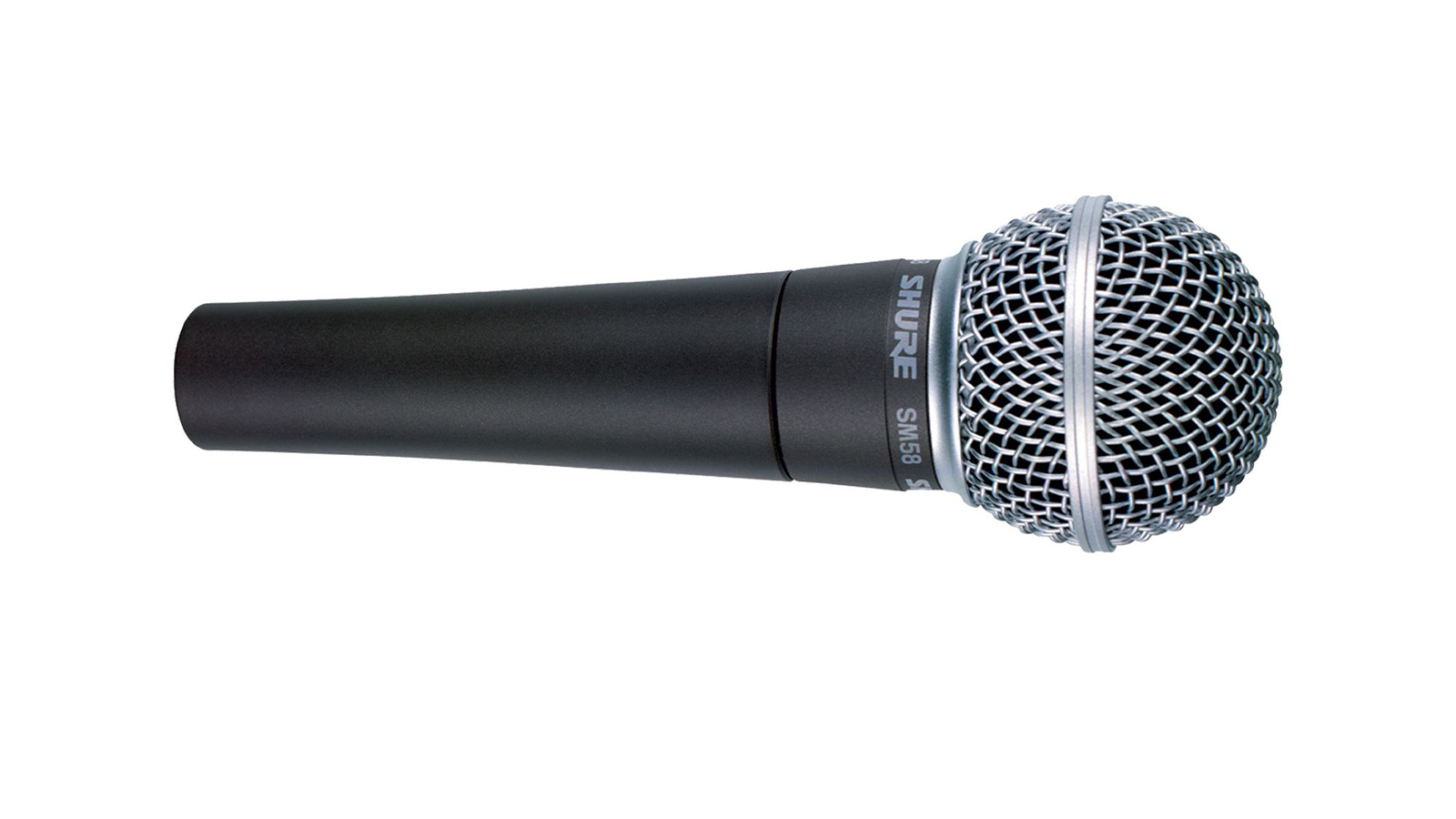
The most basic measurement of a mic’s performance is its frequency response. A frequency response curve shows how the microphone’s response effectively boosts and cuts particular frequencies of the sound it’s attempting to pick up.
It might seem logical that a mic with a perfectly flat frequency response would be the most desirable. In general, this is a fairly good guideline, but a quick look at the frequency response of the old faithful Shure SM58 quickly demonstrates the fact that a mic with an apparently inaccurate frequency response can still be an industry standard.
In addition to frequency response curves and basic polar patterns, any good manufacturer will also publish various other specifications for their microphones. These can range from the basics like impedance to a mics’ levels of self-noise, maximum sound pressure level and sensitivity, which gives you a clue as to how much gain you’ll need from your preamp.


I'm the Managing Editor of Music Technology at MusicRadar and former Editor-in-Chief of Future Music, Computer Music and Electronic Musician. I've been messing around with music tech in various forms for over two decades. I've also spent the last 10 years forgetting how to play guitar. Find me in the chillout room at raves complaining that it's past my bedtime.